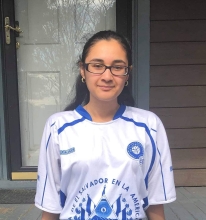Eight students will be presenting the summer work at the Ocean Sciences Meeting in March 2022!
Students Research Publications: Low-salinity tolerance of early-stage oyster larvae from a mesohaline estuary
Year:
2019Authors:
Scharping, R.J.*, L. Plough, D.W. Merritt, and E.W. NorthSource:
Marine Ecology Progress Series: 613, 97-106, https://doi.org/10.3354/meps12905
Abstract:
The eastern oyster Crassostrea virginica is an important ecosystem engineer which promotes biodiversity, yet some key physiological traits, such as the salinity tolerance of larvae in mesohaline regions, are not well understood. The objective of this study was to determine the salinity tolerances of early-stage C. virginica larvae of broodstock from the mesohaline Choptank River, Chesapeake Bay (USA), and to compare results with previous studies conducted with broodstock from the polyhaline Long Island Sound. Three experiments were conducted with broodstock and water from the Choptank River. After spawning, larvae were reared at salinities ranging from 3 to 26 for ~48 h post-fertilization. Salinity had a significant effect on larval survival in all experiments. While mean survival differed across experiments, the highest survival occurred between salinities of 7 and 16 in all experiments. The range of salinities which promoted high survival in this study was shifted lower by at least 7 salinity units compared to the range of salinities which promoted high survival of C. virginica larvae from the polyhaline Long Island Sound as reported in the literature. These results show that early-stage C. virginica larvae can survive at lower salinities than previously reported, and support the idea that the salinity of gametogenesis and the genetic background of broodstock influence the survival of larvae. In addition, this work provides the first quantitative estimates of absolute (instead of relative) survival of early-stage C. virginica larvae across salinities, which could be used to improve numerical models that support oyster management.






































